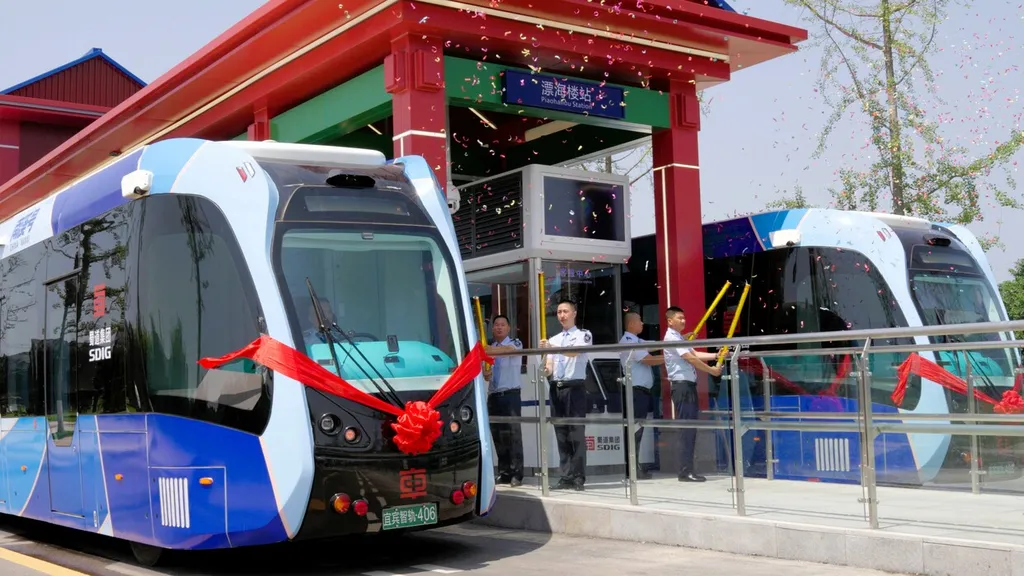In the heart of Sichuan Province, a quiet revolution is taking place, one that could reshape the future of urban transportation and offer valuable insights for the energy sector. Yibin City, known for its rich history and scenic beauty, is now making headlines as the home of the world’s first commercial operation of an autonomous-rail rapid transit (ART) system. The groundbreaking Yibin T1 line, part of a planned 156.9-kilometer ART network, is not just a local marvel but a global beacon for urban planners and engineers.
The T1 line, which winds through the old town, bridges, and new industrial areas, has demonstrated the potential of ART to alleviate urban congestion and optimize traffic structures. “The T1 line has shown distinct advantages in handling medium traffic volumes, offering feasible traffic management methods, and delivering good long-term operation results,” says lead author Jiang Xiaoqing, whose research was recently published in *Kongzhi Yu Xinxi Jishu*, which translates to *Control and Information Technology*.
Jiang’s work delves into the alignment planning, design, construction, traffic organization, and operation management of the T1 line, providing a replicable model for future ART projects. The success of the Yibin T1 line could have significant commercial impacts, particularly in the energy sector. As cities worldwide grapple with traffic congestion and the need for sustainable urban development, ART systems like the one in Yibin offer a promising solution. These systems can reduce energy consumption by optimizing traffic flow and minimizing idle time, a critical factor in lowering carbon emissions.
The research highlights the importance of signal priority and efficient traffic organization, which can lead to smoother operations and reduced energy use. “The T1 line’s performance has shown that ART can be a game-changer in urban transportation,” Jiang notes. This could translate into substantial energy savings and reduced operational costs for cities adopting similar systems.
As urbanization continues to grow, the demand for efficient and sustainable transportation solutions will only increase. The Yibin T1 line’s success story offers a blueprint for other cities looking to integrate ART into their infrastructure. The research published in *Kongzhi Yu Xinxi Jishu* provides a detailed exploration of the technical and operational aspects of ART, making it a valuable resource for engineers, planners, and policymakers.
In the broader context, the Yibin T1 line’s achievements could accelerate the adoption of ART systems globally, shaping the future of urban mobility. The energy sector, in particular, stands to benefit from the reduced energy consumption and improved efficiency that ART systems can offer. As cities strive to become smarter and more sustainable, the lessons learned from Yibin could pave the way for a new era in urban transportation.

